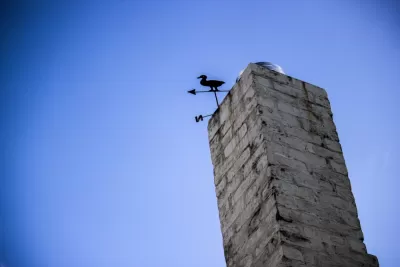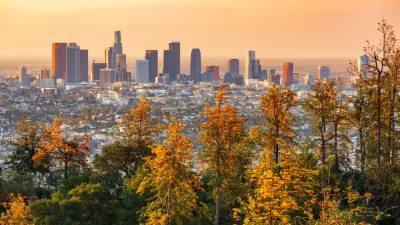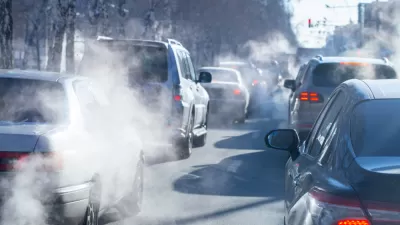With the adoption of the "Spare the Air - Cool the Climate" program, the Bay Area's air quality regulatory agency has broadened its mission to make reduction of greenhouse gases a paramount goal, along with protecting public health.

Improving air quality has been the focus of the first regional air pollution control agency in the country since its creation by the California Legislature in 1955. However, like many other regional air quality regulatory agencies in California, the Bay Area Air Quality Management District (BAAQMD) has broadened its scope to include climate protection.
With the governing board's unanimous approval of the new program, “Spare the Air, Cool the Climate," also called the 2017 Clean Air Plan, on April 19, that mission has greatly expanded. The program "lays out 85 measures that seek to reduce pollutants from industry, transportation, agriculture, homes and businesses," reports Kurtis Alexander for the San Francisco Chronicle.
No regulations take effect immediately, only a commitment to move forward. Some can be implemented by the district directly, but many will require joint action with other agencies. The district committed $4.5 million to initiate such partnerships.
"The plan lays the groundwork for bringing Bay Area greenhouse gas emissions 40 percent below 1990 levels by 2030 and 80 percent below 1990 levels by 2050," reports Guy Kovner for The Press Democrat. The first goal is consistent with new state legislation, SB 32.
BAAQMD has a long history of regulating stationary sources of emissions, such as from oil refineries, and even the burning of wood in private residences. The district has little control over mobile sources, which compose the largest source of the region's emissions.
"To address transportation, the district will work alongside cities and transit agencies to encourage greener travel —making roads friendlier for electric cars with more charging stations and encouraging regional ride-shares and carpools," adds Alexander. But it has its work cut out as even in the progressive, affluent Bay Area, electric vehicles compose "less than 2 percent of the 5.5 million registered vehicles in the Bay Area," reports Kovner.
Alexander adds that the district "will also seek to discourage overall car use by advocating for freeway tolls during high-traffic times, reductions in on-street parking and a higher gasoline tax."
Related in Planetizen: San Francisco Ahead of Schedule on Ambitious Greenhouse Gas Reduction Goals, April 21, 2017
Hat tip to Janet Strömberg
FULL STORY: Bay Area air-quality agency tackles climate change

Study: Maui’s Plan to Convert Vacation Rentals to Long-Term Housing Could Cause Nearly $1 Billion Economic Loss
The plan would reduce visitor accommodation by 25,% resulting in 1,900 jobs lost.

North Texas Transit Leaders Tout Benefits of TOD for Growing Region
At a summit focused on transit-oriented development, policymakers discussed how North Texas’ expanded light rail system can serve as a tool for economic growth.

Why Should We Subsidize Public Transportation?
Many public transit agencies face financial stress due to rising costs, declining fare revenue, and declining subsidies. Transit advocates must provide a strong business case for increasing public transit funding.

How Community Science Connects People, Parks, and Biodiversity
Community science engages people of all backgrounds in documenting local biodiversity, strengthening connections to nature, and contributing to global efforts like the City Nature Challenge to build a more inclusive and resilient future.

Alabama: Trump Terminates Settlements for Black Communities Harmed By Raw Sewage
Trump deemed the landmark civil rights agreement “illegal DEI and environmental justice policy.”

Dear Tesla Driver: “It’s not You, It’s Him.”
Amidst a booming bumper sticker industry, one writer offers solace to those asking, “Does this car make me look fascist?”
Urban Design for Planners 1: Software Tools
This six-course series explores essential urban design concepts using open source software and equips planners with the tools they need to participate fully in the urban design process.
Planning for Universal Design
Learn the tools for implementing Universal Design in planning regulations.
City of Santa Clarita
Ascent Environmental
Institute for Housing and Urban Development Studies (IHS)
City of Grandview
Harvard GSD Executive Education
Toledo-Lucas County Plan Commissions
Salt Lake City
NYU Wagner Graduate School of Public Service





























